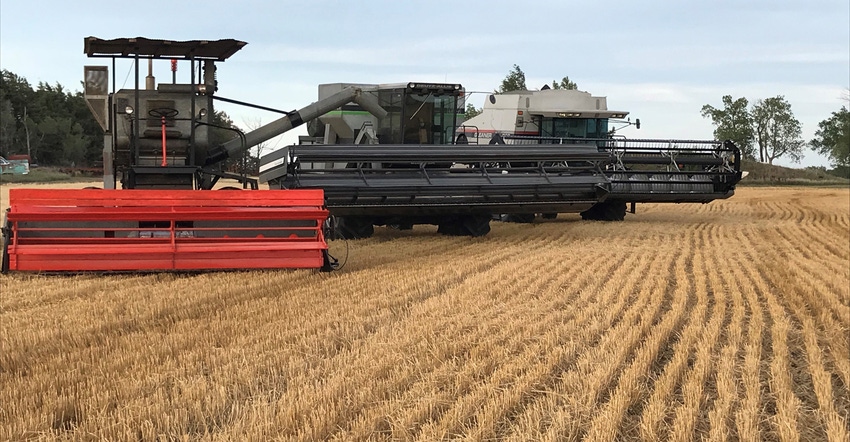December 20, 2018

A few weeks ago, a Throwback Tech column discussed Gleaner combines — specifically the Gleaner K2, a combine I used myself.
Dee Weeda, a communications specialist who works with Agco, supplied the photo of today’s S98 Gleaner. She also mentioned that her sister and brother-in-law, Sally and Tim Stroda, still had Gleaners on the home farm in Hope, Kan. They even have a Gleaner A.
Weeda sent me a picture of the combines in the field (above). Tim was gracious enough to answer questions. Here is part of his response:
“The 1957 Gleaner A was bought new by my Grandfather Vern. My father, Boyd, bought it from him. I recently inherited it from my mother, Marilyn. We used the machine until about 1993. It sat for about 25 years without running. My mother suggested we get it running to drive through the local festival parade. Our son Wade and I began working to mechanically bring it back to life. Sally and our other son Jacob spruced the old sweetheart up.
“Wade talked me into trying to cut wheat with it. I was a little hesitant, as I expected several belts to break. I held my breath as we gave it a try. We cut one load. It worked great, but I decided not to push our luck. See videos online.
“The 1987 Gleaner L3 was bought from Indiana. It’s a nice machine for being 30 years old.
“The 2000 R62 was a project of my son’s. We bought it a couple of years ago online at a very cost-effective price. We have easily put more money in parts than the purchase price, but we now have a decent old machine.
“You asked about features and upgrades. It’s hard to compare a machine with a 40-horsepower Hercules gas engine to one with a 260-horsepower Cummins diesel. We’ve had several old Gleaners — two A’s, a C2, a G, three L3’s and an R62. I started driving an A when I was 12, so my important upgrades might be different.
“The 1957 A drops clean grain into the top of the bin. On our 1962 A, clean grain came into the side of the bin and filled outward and was pushed upward. This may seem silly, but if you’re cutting oats and the wind is behind you, I guarantee you’ll appreciate this upgrade!
“Our 1965 C2 had a spinning radiator cover which helped keep the chaff from sticking to the cover. This really helped keep gas engines cool during summer wheat harvest. The A’s were a challenge to keep from overheating.
“The C2 had power steering. That was nice. The C2 and the 1968 G had cabs, but no air. They had water coolers, which kind of worked.
“The 1983 L3’s were just a huge jump for us. Diesel engines, hydrostatic drives, air conditioning and some ability to change settings from in the cab were welcome. No more rebuilding variable speed drives!
“Comparing the R62 to the earlier machines is just not fair!
“The engineers may hate me for saying this, but there are still many parts of the new Gleaner combines that reflect the heritage of the older machines. They’re just much larger.”
Comments? Email [email protected].
You May Also Like




